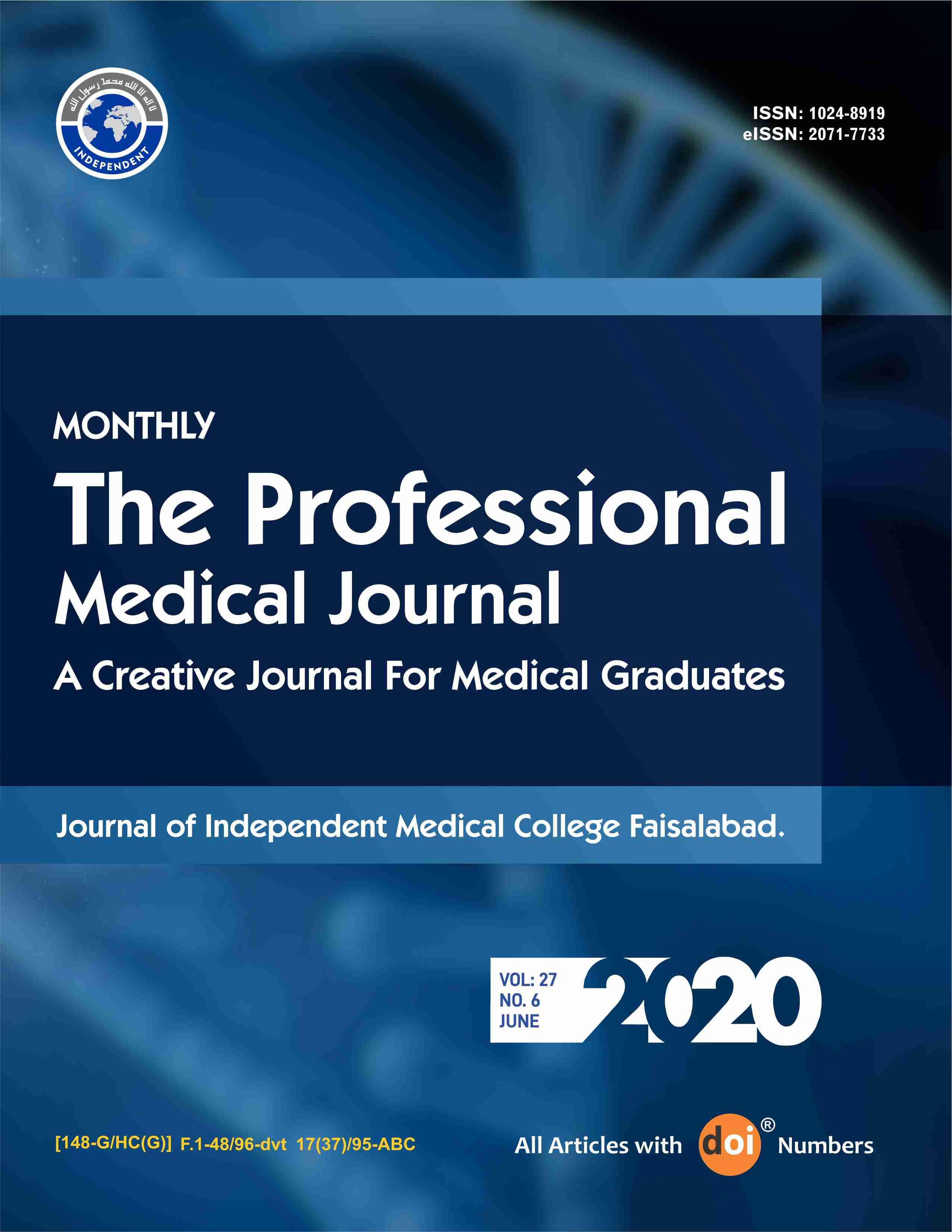Frequency of acute renal failure in blackstone poisoning
DOI:
https://doi.org/10.29309/TPMJ/2020.27.05.4392Keywords:
Acute renal failure, Blackstone poisoning, Urine output adultsAbstract
Objective: To determine the frequency of acute renal failure in patients presented with Blackstone poisoning in a tertiary care Hospital. Study Design: Cross sectional study. Setting: Medical wards and ICU at Peoples Medical College Hospital, Nawabshah. Period: September 2017 to March 2018. Material & Methods: All the patients of age 20 to 50 years having Paraphenylenediamine (PPD) poisoning (kala-patthar) during ≥6 hours after ingestion and either of gender were included. AKI was labelled as positive if either of any stage was present on the basses of urine output measurement for 24 hours through urine beg r urine output (UO) criteria. All the data was documented in self-made proforma. Results: The mean age for patients was 24.9±8.9 years, 46(19.08%) subjects were male and 195(80.91%) were female. 18(7.5%) study subjects had acute renal failure, out of them 6 study subjects had ARF of stage I, 5 patients had stage II and 7 study subjects had acute renal failure stage III. Conclusion: Acute renal injury is a common complication following PPD ingestion 7.5%. Paraphenylenediamine toxicity is a threat to the region of Asia and is evolving as a substitute to the poisoning of organophosphorus due to its easy accessibility and low cost.


